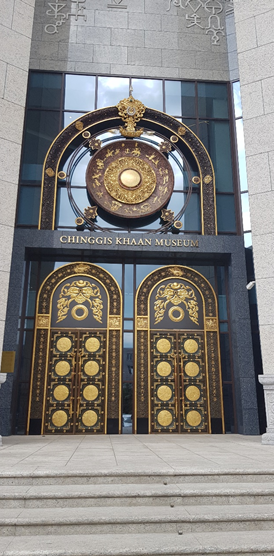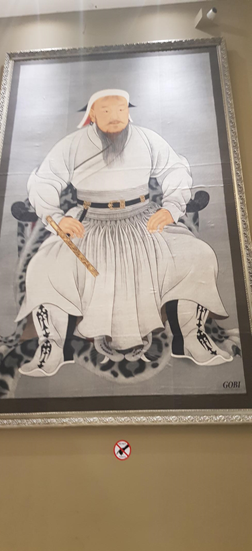by Andy Khong
Nestled between the borders of Russia and China, Mongolia unveils a mesmerizing blend of natural wonders, profound history, and resilient nomadic traditions. Explore the intricate fabric of its past, diverse landscapes, evolving political landscape, robust economy, and captivating tourist attractions.
Mongolia’s history weaves an epic tale of empires and nomads. The formidable Chinggis (Genghis) Khan forged the legendary Mongol Empire in the 13th century, an empire that stretched across continents, facilitating a cross-cultural exchange between East and West. Following eras of Chinese and Russian influence, Mongolia reclaimed its independence in 1911, fostering a unique national identity.
Mongolia’s geography paints a canvas of breathtaking diversity. The sprawling steppes are a testament to the symbiotic relationship between nomadic herders and their resilient livestock. The enigmatic Gobi Desert invites adventurers to uncover its shifting sands and tenacious life forms. Towering mountain ranges such as the Altai, Khangai, and Hentii provide both a dramatic backdrop and a playground for modern exploration.
From its socialist past, Mongolia has transitioned into a thriving parliamentary republic. The nation is led by a President and Prime Minister, working diligently to nurture democratic values and foster international partnerships. This political stability has paved the way for economic growth and diversification, propelling Mongolia towards a promising future.
Mongolia’s economy harmonizes agriculture, mining, and herding. Abundant mineral wealth including coal, copper, and gold has propelled growth while exposing vulnerabilities. The nation’s strategic focus on tourism presents a new avenue to showcase its natural beauty and rich cultural heritage to the world.
At the heart of Mongolia lies Ulaanbaatar, a bustling metropolis seamlessly blending tradition and modernity. Amidst its vibrant streets, a tapestry of attractions offers insights into the nation’s soul:
- Gandantegchinlen Monastery: Discover tranquillity within the revered Gandan Monastery, an embodiment of Mongolia’s spiritual legacy.


Inside Gandantegchinlen Monastery.
2. Natural History Museum: Immerse yourself in the nation’s narrative through an array of artefacts spanning epochs, from ancient chronicles to contemporary tales.

3. Sükhbaatar Square: Pay homage to Mongolia’s revolutionary hero at this central square, an epicentre of celebrations and cultural events.

4. Zaisan Memorial: Ascend to panoramic vistas atop the memorial for a captivating view of the city and the undulating hills beyond, commemorating World War II heroes.

5. Bogd Khan Palace Museum: Step into Mongolia’s royal history as you explore the former winter palace of the eighth Living Buddha, Bogd Khan.


6. Chojin Lama Temple: is a historical Buddhist monastery complex that dates back to the early 20th century. It was established by the 8th Bogd Khan, a spiritual leader and theocratic ruler of Mongolia at that time. The temple complex consists of several buildings that showcase intricate religious artwork, sculptures, and artefacts. It’s a testament to Mongolia’s rich religious and cultural heritage and offers visitors a glimpse into the country’s spiritual past.

7. Chinggis Khan Museum: the new Chinggis Khan Museum (opened October 2022) in Ulaanbaatar, Mongolia, is a modern museum dedicated to the life, history, and legacy of Chinggis Khan, the founder of the Mongol Empire. It houses a collection of artefacts, exhibits, and interactive displays that provide insights into Chinggis Khan’s leadership, the Mongol Empire’s impact on world history, and the cultural heritage of Mongolia. The museum offers visitors a chance to delve into the fascinating story of one of history’s most influential figures and the empire he built.


Mongolia’s allure extends beyond the city limits, beckoning adventurers to uncover its natural gems:
- Gobi Desert: Traverse the mystique of the Gobi Desert, where the haunting “Singing Dunes” carry secrets on the wind.

2. Lake Khövsgöl: Lose yourself in the serene beauty of Lake Khövsgöl, immersing yourself in fishing, hiking, and a profound connection with nature.

3. Orkhon Valley: Travel back in time amidst the UNESCO-listed Orkhon Valley, uncovering ancient ruins and sacred sites that whisper of a storied past.

4. Erdene Zuu Monastery: Encounter the spiritual tapestry of Mongolia at the Erdene Zuu Monastery, a testament to the fusion of Buddhist and Mongol architectural styles.

5. Naadam Festival: Engage in Mongolia’s heart-pounding Naadam Festival, a celebration of ancient “Three Manly Games” – wrestling, horse racing, and archery.


6. Chinggis Khan Statue: Behold the colossal Chinggis Khan Statue, a tribute to the legendary leader, standing regal against the backdrop of Mongolia’s scenic beauty.


7. Terelj National Park: is a picturesque natural reserve located near Ulaanbaatar, Mongolia. It’s renowned for its stunning landscapes, including lush valleys, rocky formations, and the iconic Turtle Rock. The park offers opportunities for hiking, horseback riding, and experiencing the traditional nomadic way of life in ger camps.


8. Aryabal Meditation Temple: is a serene Buddhist meditation centre situated in the scenic surroundings of Terelj National Park, Mongolia. This temple provides a tranquil setting for individuals seeking spiritual retreat and meditation. The temple complex features meditation halls, prayer wheels, and stupas, offering visitors a peaceful space to engage in mindfulness practices and connect with their inner selves amidst the natural beauty of Terelj National Park.

Journeying to Mongolia means immersing yourself in a realm where history, nature, and culture entwine. From the echoes of Genghis Khan’s empire to the modern rhythm of Ulaanbaatar, this nation promises an unforgettable experience. Traverse the sprawling landscapes, embrace the genuine hospitality of nomads, and uncover a realm that captures the essence of untouched beauty. Your adventure in Mongolia awaits, promising memories that will linger long after you’ve left its enchanting embrace.
Read about Chinggis (Genghis) Khan
Read about Inner Mongolia, China
YPT’s 2024 tour to Mongolia (10-17 July)






